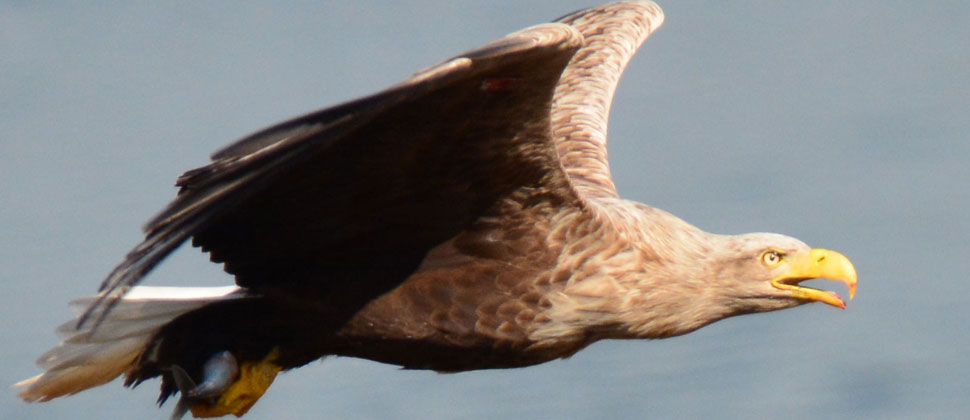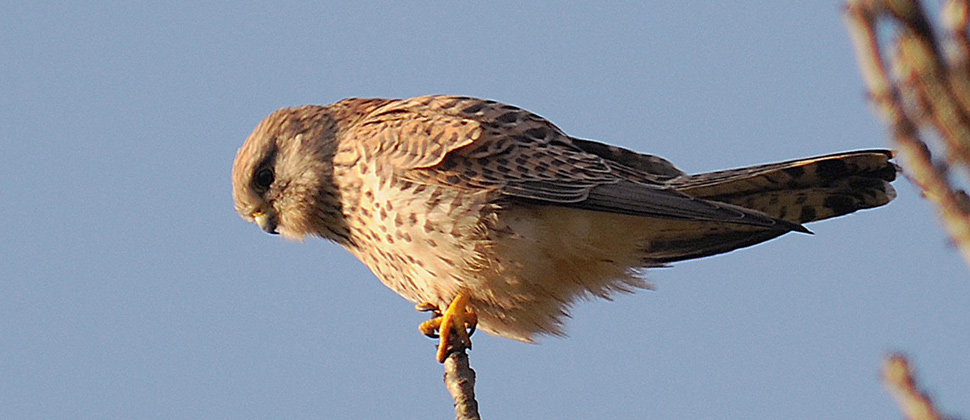News
30 September 2013
Today sees the welcome publication of the first annual Wildlife Crime Report for Scotland. The report has been published by the Scottish Government and refers to all wildlife crime reported in Scotland during 2012, including incidents of illegal raptor persecution. Following the enactment of the Wildlife and Natural Environment (Scotland) Act 2011, the government now has to produce these annual reports and these are expected to include detailed information about the number and type of reported wildlife crimes within a calendar year, as well as information about subsequent prosecutions. The 2012 report can be found here.
4 September 2013
Forestry Commission Scotland has published new guidance on how to plan and assess proposals for new woodlands in parts of Scotland that have been designated as Special Protection Areas for golden eagles. Read the FCS press release here.
2 September 2013
A new scientific publication raises concerns about the threat of secondary poisoning in some Scottish raptor species from agricultural rat poisons. Published in the journal Ecotoxicology, the paper suggests that statutory monitoring of rodenticide use may be neccessary.
Hughes, J., Sharp, E., Taylor, M.J., Melton, L. and Hartley, G. (2013). Monitoring agricultural rodenticide use and secondary exposure of raptors in Scotland. Ecotoxicology 22 (6): 974-984.
Abstract:
Despite the documented risk of secondary poisoning to non-target species by anticoagulant rodenticides there is no statutory post-approval monitoring of their use in the UK. This paper presents results from two Scottish monitoring schemes for the period 2000–2010; recording rodenticide use on arable farms and the presence of residues in raptor carcasses. More than three quarters of arable farms used anticoagulant rodenticides; predominately the second generation compounds difenacoum and bromadiolone. There was widespread exposure to anticoagulant rodenticides in liver tissues of the raptor species tested and the residues encountered generally reflected agricultural use patterns. As found in other studies, Red Kites (Milvus milvus) appeared to be particularly vulnerable to rodenticide exposure, 70 % of those sampled (n = 114) contained residues and 10 % died as a result of rodenticide ingestion. More unexpectedly, sparrowhawks (Accipiter nisus), which prey almost exclusively on birds, had similar exposure rates to species which prey on rodents. Although, with the exception of kites, confirmed mortality from rodenticides was low, the widespread exposure recorded is concerning. Particularly when coupled with a lack of data about the sub-lethal effects of these compounds. This raises questions regarding whether statutory monitoring of use is needed; both to address whether there are deficiencies in compliance with approval conditions or whether the recommended risk management procedures are themselves adequate to protect non-target wildlife.
1 September 2013
Earlier this summer the police reported the discovery of a dead buzzard that had been found near Carcant Hill, Heriot at the end of June. A post-mortem revealed the bird had been shot although it wasn’t clear whether that was the cause of death. Further tests have now revealed that the bird was killed by poisoning. PC Hannah Medley, a police wildlife crime liaison officer, is investigating the case. More details on the BBC website here.
25 August 2013
Scientists at the University of Aberdeen and the RSPB have teamed up to develop a ground-breaking new project called ‘Blogging Birds’. Satellite tags fitted to four red kites are sending information to an automated computer programme that can analyse the tag data and produce a short paragraph, blog-style, about where the birds have been. Find out more information by visiting the project website.
23 August 2013
An injured young red kite was found by a member of the public in the village of Leadhills on 8th August. The bird was suffering to such an extent and her injuries were so severe that the most humane option was to put her to sleep, according to the SSPCA news report. A post-mortem revealed she had been shot. The SSPCA is appealing for information about this crime. Leadhills is a known hotspot for the illegal persecution of birds of prey and several gamekeepers have been previously convicted for wildlife crimes in the area. Red kites have been reintroduced into several areas of Scotland, beginning in 1989, and illegal persecution is known to be their greatest threat.
22 August 2013
The annual Watson Birds Festival returns to Dalry this year between 20-22 September. The Watson Birds project was established in memory of two legendary ornithologists and Raptor Study Group members, Donald Watson and his son Jeff. There’ll be plenty of family-friendly events during the festival including an art exhibition, a free drop-in bird ringing session, a guided walk and a photography masterclass by celebrated wildlife photographer Laurie Campbell. There will also be two lectures featuring Dr Miguel Ferrer (Spain) discussing the interaction of birds and windfarms, and Richard Evans (RSPB Scotland) discussing his work on the history of eagles in the UK as determined by place names. Keep an eye on the Watson Birds website for details of how to get involved.
21 August 2013
Satellite-tracking studies in Scotland have revealed that at least two sub-adult golden eagles attempted to breed this year. The two females were both three years old; the typical breeding age for an adult golden eagle is between 4-6 years. Scottish Natural Heritage has been criticised for suggesting that the breeding attempts could show an ‘upturn’ in the fortunes of golden eagles in Scotland – research has shown that breeding attempts by immature eagles could be an indication of persecution and should be viewed as a warning sign that the population may be in decline. The Scottish Raptor Study Group remains deeply concerned about the unfavourable conservation status of golden eagles in Scotland, and is particularly worried about the on-going persecution of this species on driven grouse moors; this criminal activity remains unchecked and unpunished.
20 August 2013
A significant milestone in the East Scotland Sea Eagle Project has been reached with the announcement that this year a breeding pair has successfully raised a chick at a secret location in Fife. The project saw 85 young sea eagles, donated by Norway, released in Fife over a six-year period (2007-2012). This year’s successful breeding pair comprised two birds from the 2009 cohort, now aged four years old. The chick has recently fledged from the nest and is being closely monitored by project staff. Sea eagles still face substantial risks in Scotland, including the threat of illegal persecution. In January this year another sea eagle nest tree in eastern Scotland (on a shooting estate in the Angus Glens) was illegally felled. The police are still investigating that crime. The Scottish Raptor Study Group (whose members have played a part in the East Scotland Reintroduction Project) is thrilled to learn of the successful fledging of the first sea eagle chick and we send warm congratulations to the project team at RSPB Scotland, SNH and Forestry Commission Scotland. View the RSPB press release here.
14 August 2013
Following the successful reintroduction of ospreys to Andalusia in southern Spain, involving young ospreys from Scotland, Finland and Germany, a further reintroduction is now underway on the north Spanish coast near Bilbao. Twelve young ospreys have been collected under special licence from nests in Scotland by Raptor Study Group member and international osprey expert Roy Dennis. After a period of acclimatisation in Spain, the young birds have now been released into the wild in an area known to be a migration stop-over point for Scottish ospreys. Read about this five-year project on Roy’s blog.
Archive:
2015
- February,
- January,
2014
- December,
- November,
- October,
- July,
- June,
- May,
- April,
- March,
- February,
- January,
2013
- December,
- November,
- October,
- September,
- August,
- July,
- June,
- May,
- January,
2012
- December,
- November,
- October,
- September,
- August,
- July,
- June,
- May,
- April,
- March,
- February,
- January,





